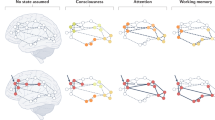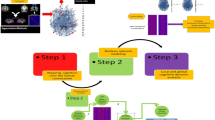Abstract
The brain is characterized by performing many different processing tasks ranging from elaborate processes such as pattern recognition, memory or decision-making to more simple functionalities such as linear filtering in image processing. Understanding the mechanisms by which the brain is able to produce such a different range of cortical operations remains a fundamental problem in neuroscience. Some recent empirical and theoretical results support the notion that the brain is naturally poised between ordered and chaotic states. As the largest number of metastable states exists at a point near the transition, the brain therefore has access to a larger repertoire of behaviours. Consequently, it is of high interest to know which type of processing can be associated with both ordered and disordered states. Here we show an explanation of which processes are related to chaotic and synchronized states based on the study of in-silico implementation of biologically plausible neural systems. The measurements obtained reveal that synchronized cells (that can be understood as ordered states of the brain) are related to non-linear computations, while uncorrelated neural ensembles are excellent information transmission systems that are able to implement linear transformations (as the realization of convolution products) and to parallelize neural processes. From these results we propose a plausible meaning for Hebbian and non-Hebbian learning rules as those biophysical mechanisms by which the brain creates ordered or chaotic ensembles depending on the desired functionality. The measurements that we obtain from the hardware implementation of different neural systems endorse the fact that the brain is working with two different states, ordered and chaotic, with complementary functionalities that imply non-linear processing (synchronized states) and information transmission and convolution (chaotic states).
Similar content being viewed by others
Article PDF
Author information
Authors and Affiliations
Corresponding author
Rights and permissions
About this article
Cite this article
Rossello, J., Canals, V. & Morro, A. Neural Information Processing: between synchrony and chaos. Nat Prec (2012). https://doi.org/10.1038/npre.2012.6935.1
Received:
Accepted:
Published:
DOI: https://doi.org/10.1038/npre.2012.6935.1



